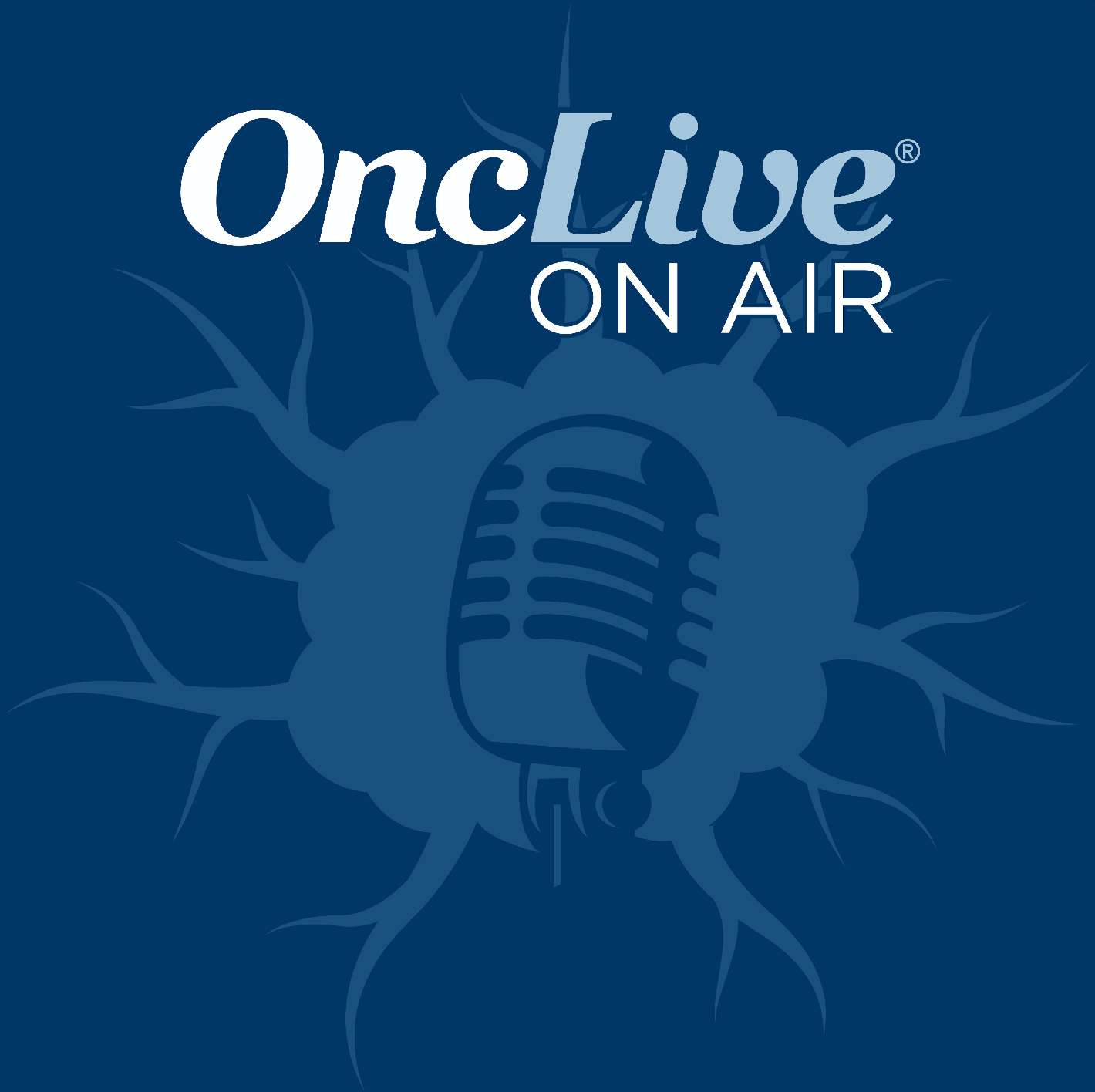Publication
Article
Oncology Nursing News
Treating Complex Cancer Pain-Looking Outside the Box
Author(s):
When treating complex cancer pain cases, clinicians should "look outside the box" and consider new agents, as well as new uses and administration routes for older agents.
Judith A. Paice, PhD, RN, FAAN
Patrick Coyne, MSN, APRN
When treating complex cancer pain cases, clinicians should “look outside the box” and consider new agents, as well as new uses and administration routes for older agents, two leading experts on cancer pain treatment recommended at the recent Oncology Nursing Society “Connections: Advancing Care Through Science” conference in Phoenix, Arizona.
Topical Cocaine
Judith Paice, PhD, RN, and Patrick Coyne, MSN, APRN, used patient case studies as a springboard for attendees to ponder some innovative approaches to treating patients with intractable pain. Paice is director of the Cancer Pain Program in the Division of Hematology-Oncology and a research professor of Medicine at Northwestern University’s Feinberg School of Medicine in Chicago. Coyne is a clinical nurse specialist for palliative care/pain management and clinical director of the Thomas Palliative Care Program at the Medical College of Virginia Hospitals/Virginia Commonwealth University Health Systems in Richmond.A patient with advanced head and neck cancer, experiencing severe localized pain in his or her mouth, could benefit from topical cocaine, said Coyne, who noted that the agent is readily available in most hospitals, is a common treatment for lacerations seen in emergency departments in some parts of the country, and is used effectively for pain management during nasal and dermatologic procedures.
Although topical cocaine has not been described in the literature for repeated dosing for oral or mucosal pain, Coyne said that when used appropriately, “this intervention can result in dramatic improvement in quality of life and functional status.” He has reported success with a formulation of 4% topical cocaine applied to the areas of pain in dosages up to 5 mL every 6 hours.1
Other Topical Therapies
Side effects for the agent may include gingival recession and erythematous lesions, noted Coyne, and if recommended topical dosages are exceeded, the cocaine can be absorbed systemically, causing a stimulant response and, conceivably, addiction. In addition to head and neck cancers, the formulation can be used for pain relief in some gynecologic cancers and for mucositis due to systemic chemotherapy.Another case study illustrates several issues associated with topical agents in managing pain and nausea in the metastatic patient. In this case, a patient admitted to hospice with widely metastatic lung cancer reported severe nausea, vomiting, and pain, despite being treated with topical morphine and the antinausea topical compound ABH (lorazepam (Ativan), diphenhydramine (Benadryl), and haloperidol (Haldol)). Before entering hospice, the patient was on a 125-mcg fentanyl patch, but this was stopped with the initiation of topical morphine.
ABH is commonly used in hospice to treat nausea; however, recent research has challenged its effectiveness when administered topically.2 Thomas J. Smith, MD, director of Palliative Care at Johns Hopkins University, and colleagues examined blood levels of 10 healthy volunteers receiving the standard 1.0 mL dose of ABH, applied to the wrist. They found that none of the compounds in the ABH gel were absorbed sufficiently to have an effect on nausea and vomiting. The researchers recommended further randomized trials to confirm efficacy.
Coyne noted that many clinicians have been surprised by this finding, and suggested that some patients receiving the treatment may be having a placebo response. Paice added that the question of using ABH as a suppository often comes up. “That makes sense, because one can get absorption through the rectal tissues,” she said.
Paice also has studied the effectiveness of topical morphine. She led a small study of the topical application versus subcutaneous administration among healthy volunteers admitted to the Northwestern University General Clinical Research Center.3 She noted that the subcutaneous route demonstrated a “perfect pharmacokinetic curve,” peaking at about 30 minutes. However, when the drug was administered topically, “there was no detectable level of morphine.”
When she speaks to hospice groups, Paice finds that very few clinicians now use the topical morphine formulation. While that is encouraging, she said, “we’re still trying to work on those very few” who continue to use the treatment.
Intravenous Lidocaine
Another question which often comes up, said Paice, is whether the transdermal fentanyl patch can work in very thin patients. To rule this approach out, she said, “may be a bit premature.” She cited a study of the patch’s use in cachectic cancer patients. The researchers found that plasma fentanyl concentrations were lower in cachectic patients compared with normal-weight counterparts4; however, “even very cachectic patients do absorb fentanyl—a little bit less than patients of normal weight, but they still absorb it. We’re not dosing on plasma levels anyway; we’re dosing empirically, so it gives us some support that fentanyl patches, even in very cachectic patients, can benefit,” she said.Intravenous lidocaine is another option for pain management in some patients whose pain does not respond to standard treatments. In one case, a 34-year-old woman with widely metastatic breast cancer reported severe back pain, despite treatment with oral methadone and oral hydromorphone.
The presenters noted that intravenous lidocaine is more effective for neuropathic pain, but has proven to be effective for other pain syndromes, and that long-lasting pain relief after the drug has stopped has been demonstrated in some studies.
Paice said the lack of a tablet form of lidocaine poses a treatment challenge; chronic pain programs typically administer the drug with an IV bolus, she said. One or two months later, “many patients report adequate control.” At her palliative care unit, they use a starting dose of 0.5 mg-2 mg/ kg, over about 30-60 minutes, and then re-evaluate.5 “If you’re going a little too quickly, patients may report that they feel a little ‘drunk’ in their tongue; as their lips or their tongue get a little numb, you can just stop the infusion, and restart at a slower rate,” she explained.
Coyne said that IV lidocaine is used in his clinic, as well, and proved to be especially effective with a 4-year-old patient who couldn’t tolerate other therapies due to vomiting. It is also being studied for use in sickle cell patients.
Dexmedetomidine
“Lidocaine works for some people,” said Paice. “It doesn’t work for everyone,” and is usually reserved for the very complex cases.Coyne noted that dexmedetomidine (Precedex), commonly used in intensive care and burn units, has “amazing sedative and analgesic properties,” and is 7-8 times more potent than clonidine. Yet the drug is costly and can have adverse effects, such as cardiovascular depression, including hypotension and bradycardia.
He said the usual starting dose is 0.2 mcg/kg/ hour; vital signs need to be checked before infusion and every 15 minutes after starting or increasing the dose, “so this is pretty work-intense.” An increase of 0.1 mcg/kg in the infusion can be initiated every 30 minutes until pain is controlled, but not if the heart rate drops below 80 or systolic blood pressure drops below 100, or if either of these indicators falls below the pre-infusion baseline by more than 30%.6,7
Ketamine
“We look at this as really a bridge drug, while we’re trying to think of things—while trying to get someone in to do a nerve block, or prior to trying a new adjunct medication, or while we’re trying to get a bone stabilized.” Coyne said that it is not a long-term drug, but one to consider, and that it is usually well tolerated.Another option might be ketamine, which case reports have shown to be effective when traditional and invasive techniques have not worked.8 Coyne noted that it is “a really weak analgesic when used by itself, especially in smaller doses, but it is a strong adjunct, because it inhibits the binding of glutamate to the NMDA (N-methyl-D-aspartate) receptors. When you use this drug, you can basically plan on decreasing opiates significantly. In our practice, we dropped opiates by 30% to 50% when we started using this drug.”
He noted that, while there is currently no agreement on a single, uniform best protocol, the typical intermittent dosing schedule is 0.25-0.50 mg/kg, IV 3 times daily. The drug may also be administered orally, but the parenteral formulation must be used, and that, said Coyne, presents problems with an unpleasant taste, which can be masked with cola or another additive. He said that some clinicians have observed that, when given orally, the drug has fewer side effects.
MC5-A Calmare Therapy
Ketamine can produce cognitive complications, including alterations in body image and mood and vivid dreams or hallucinations, as well as increases in blood pressure and intracranial pressure. “It’s not an easy medication to work with,” said Coyne, but it may offer benefit for the difficult pain patient. Paice added that its primary indication is for neuropathic pain or when a patient experiences adverse effects, such as severe nausea and constipation, from receiving high doses of opiates.A nondrug option for chemotherapy-induced neuropathic pain is the MC5-A Calmare “Scrambler” therapy, an electrostimulation device, whereby patients are hooked up to a machine that perceives when nerves are firing, and essentially stops that activity, Coyne explained.
Coyne is one of the authors of a phase II study of the MC5-A Calmare involving 16 patients receiving 1-hour interventions over 10 days.9 Fifteen patients experienced a 20% reduction in pain scores, and a statistically significant difference between preand post-daily pain scores was reported (P = .001). When used at his clinic, Coyne said, “Out of left field, it worked. We had patients who failed every medication you can think of for neuropathic pain, walking out after the first or second treatment with no pain. The interesting thing about this intervention—and this is an early study—was that numbness went away, too.”
He added that a study of the device to treat cancer- related pain in 40 patients is in its final stages. “We’ll see where it goes. I think you’re going to hear a lot more about this. It’s new—and it’s not a medication.”
References
- Newport K, Coyne P. Topical cocaine for relief of mucosal pain. J Pain Palliat Care Pharmacother. 2010;24(2):149-151.
- Smith TJ, Ritter JK, Poklis JL, et al. ABH gel is not absorbed from the skin of normal volunteers. J Pain Symptom Manage. 2012;43(5):961- 966.
- Paice JA, Von Roenn JH, Hudgins JC, Luong L, Krejcie TC, Avram MJ. Morphine bioavailability from a topical gel formulation in volunteers. J Pain Symptom Manage. 2008;35(3):314-320.
- Heiskanen T, Matzke S, Haakana S, Gergov M, Vuori E, Kalso E. Transdermal fentanyl in cachectic cancer patients. Pain. 2009;144(1- 2):218-222.
- Ferrini R, Paice JA. How to initiate and monitor infusional lidocaine for severe and/or neuropathic pain. J Support Oncol. 2004;2(1):90-94.
- Roberts SB, Wozencraft CP, Coyne PJ, Smith TJ. Dexmedetomidine as an adjuvant analgesic for intractable cancer pain. J Palliat Med. 2011;14(3):371-373.
- Coyne PJ, Wozencraft CP, Roberts SB, Bobb B, Smith TJ. Dexmedetomidine: exploring its potential role and dosing guideline for its use in intractable pain in the palliative care setting. J Pain Palliat Care Pharmacother. 2010;24(4):384-386.
- Okon T. Ketamine: an introduction for the pain and palliative medicine physician. Pain Physician. 2007;10(3):493-500.
- Smith TJ, Coyne PJ, Parker GL, Dodson P, Ramakrishnan V. Pilot trial of a patient-specific cutaneous electrostimulation device (MC5-A Calmare®) for chemotherapy-induced peripheral neuropathy. J Pain Symptom Manage. 2010;40(6):883-891.
























